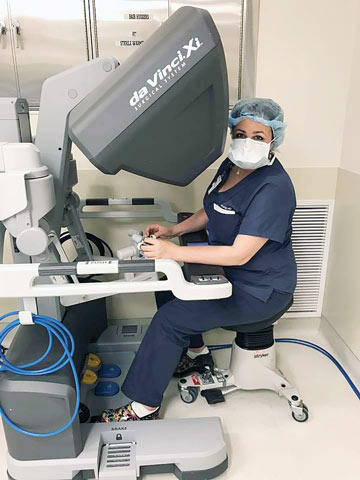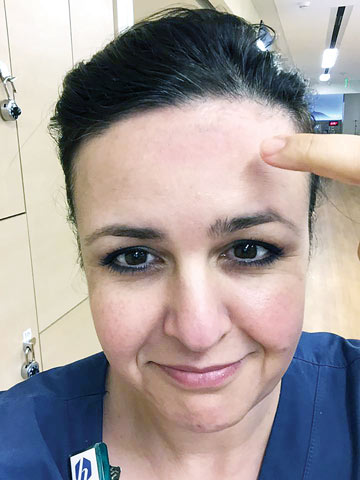When you turn the page, you'll see a crease across my forehead and a smile across my face. That's how you can tell I just did a robotic-assisted hernia case. The crease is from leaning my forehead against the padded console as I look into the telescopes. The smile? That's from the fun of playing with joysticks and my back's way of thanking me for doing surgery while seated on a stool.
I've been fascinated with robotic hernias ever since I saw the video a few years ago of Arizona surgeon Conrad Ballecer, MD, using a robot to do a very complicated hernia repair. There he was, deftly transforming a no-doubt-about-it open procedure into a minimally invasive one, sparing his patient a major surgery, a few nights in the hospital, and a long and painful recovery. As a surgeon who specializes in complex hernias, I wanted to be able to offer this to my patients, many of whom had prior hernia repairs and now suffer complications with chronic pain.
For me, the robot really comes in handy (pun intended) for complex cases like transversus abdominis release for large or recurrent ventral incisional hernias. I can minimally invasively handle complicated procedures that I previously performed open. That's because the robot's arms let you operate in the abdomen similarly to how you would operate during an open procedure.
.svg?sfvrsn=be606e78_3)


.svg?sfvrsn=56b2f850_5)